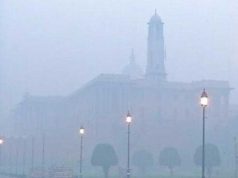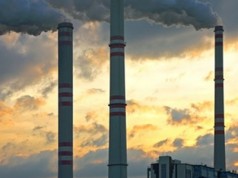“Unmanaged growth in motor vehicle use threatens to exacerbate growing income inequality and environmental ills, while more sustainable transport delivers access for all, reducing these ills. This report’s findings should help support wider agreement on climate policy, where costs and equity of the clean-up burden between rich and poor are key issues,” noted Replogle.
Emission Standards Save Lives
Air pollution is a leading cause of early death, responsible for more than 3.2 million early deaths annually. Exposure to vehicle tailpipe emissions is associated with increased risk of early death from cardiopulmonary disease and lung cancer, as well as respiratory infections in children. Car and diesel exhaust also increases the risk of non-fatal health outcomes, including asthma and cardiovascular disease.
The International Council on Clean Transportation evaluated the impacts of urban travel by cars, motorcycles, trucks and buses on the number of early deaths from exposure to soot emitted directly from vehicle tailpipes.
“Future growth in vehicle activity could produce a four-fold increase in associated early deaths by 2050, even with a global shift to mass transit,” said ICCT’s Joshua Miller, a contributor to the study. “We could avoid about 1.4 million early deaths annually if national leaders committed to a global policy roadmap that requires the strongest vehicle pollution controls and ultralow-sulfur fuels.” Cleaner buses alone would account for 20 percent of these benefits.
Fuel Economy Standards Save Fuel and Cut CO2 Emissions
While this study has not focused on further actions to boost motor vehicle fuel economy, it takes into account existing policies that, in the International Energy Agency‘s Baseline scenario, improve average new car fuel economy by 32 percent in countries that belong to the Organisation for Economic Co-operation and Development (OECD), a group of 34 of the world’s most developed, democratic, market economies, and 23 percent in non-OECD countries.
The High Shift scenario increases this to 36 percent and 27 percent respectively, due to improved in-use driving conditions and a slight shift to smaller vehicles. However, the Global Fuel Economy Initiative (GFEI) calls for much more: a 50 percent reduction in fuel use per kilometer for light-duty vehicles worldwide by 2030. Achieving the GFEI 2030 goal could reduce 700 megatons of CO2 annually beyond the 1,700 reduction possible from a High Shift scenario. Taken together, achieving this fuel economy goal with better public transport, walking and cycling could cut annual urban passenger transport CO2 emissions in 2050 by 55 percent from what they might otherwise be in 2050 and 10 percent below 2010 levels.
Cutting Emissions with Sustainable Transportation Across the World’s Cities
Transportation in urban areas accounted for about 2,300 megatons of CO2 in 2010, almost one quarter of carbon emissions from all parts of the transportation sector. Rapid urbanization – especially in fast developing countries like China and India – will cause these emissions to double by 2050 in the baseline scenario.
Among the countries examined in the study, three stand out:
- United States: Currently the world leader in urban passenger transportation CO2 emissions, with nearly 670 megatons annually, the U.S. is projected to lower these emissions to 560 megatons by 2050 because of slower population growth, higher fuel efficiencies, and a decline in driving per person that has already started as people move back to cities. But this pace can be sharply accelerated with more sustainable transportation options, dropping to about 280 megatons, under the High Shift scenario.
- China: CO2 emissions from transportation are expected to mushroom from 190 megatons annually to more than 1,100 megatons, due in large part to the explosive growth of China’s urban areas, the growing wealth of Chinese consumers, and their dependence on automobiles. But this increase can be slashed to 650 megatons under the High Shift scenario, in which cities develop extensive BRT and metro systems. The latest data show China is already sharply increasing investments in public transport.
- India: CO2 emissions are projected to leap from about 70 megatons today to 540 megatons by 2050, also because of growing wealth and urban populations. But this increase can be moderated to only 350 megatons, under the High Shift scenario, by addressing crucial deficiencies in India’s public transport.
Click here to read/download the Full Report.
Source: ITDP.
About ITDP
The Institute for Transportation and Development Policy (ITDP) is a global non-profit that helps cities design and implement high-quality transit systems to make communities more liveable, competitive and sustainable. ITDP works with cities worldwide to bring about transport solutions that cut greenhouse gas emissions, reduce poverty, and improve the quality of urban life. For more information, visit www.itdp.org.















